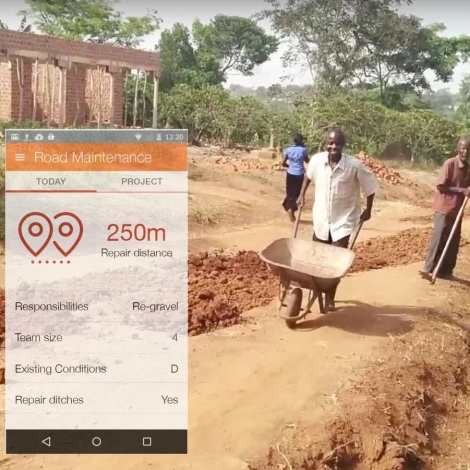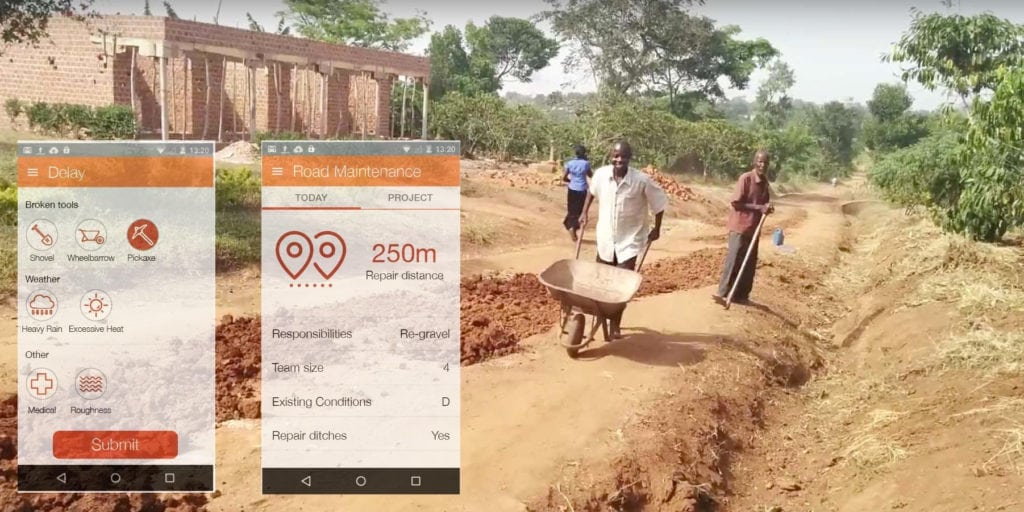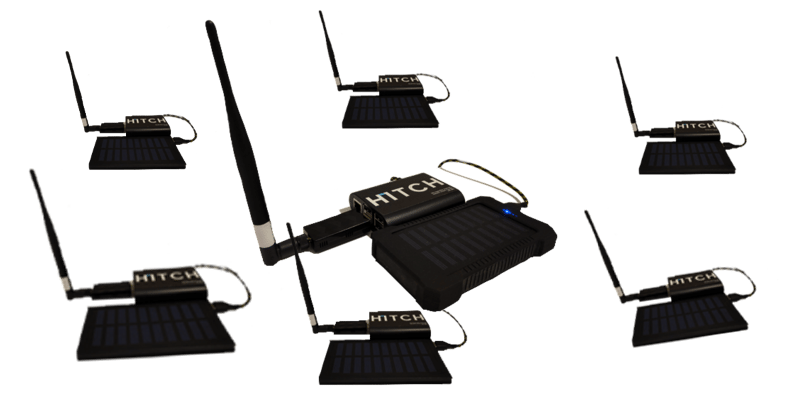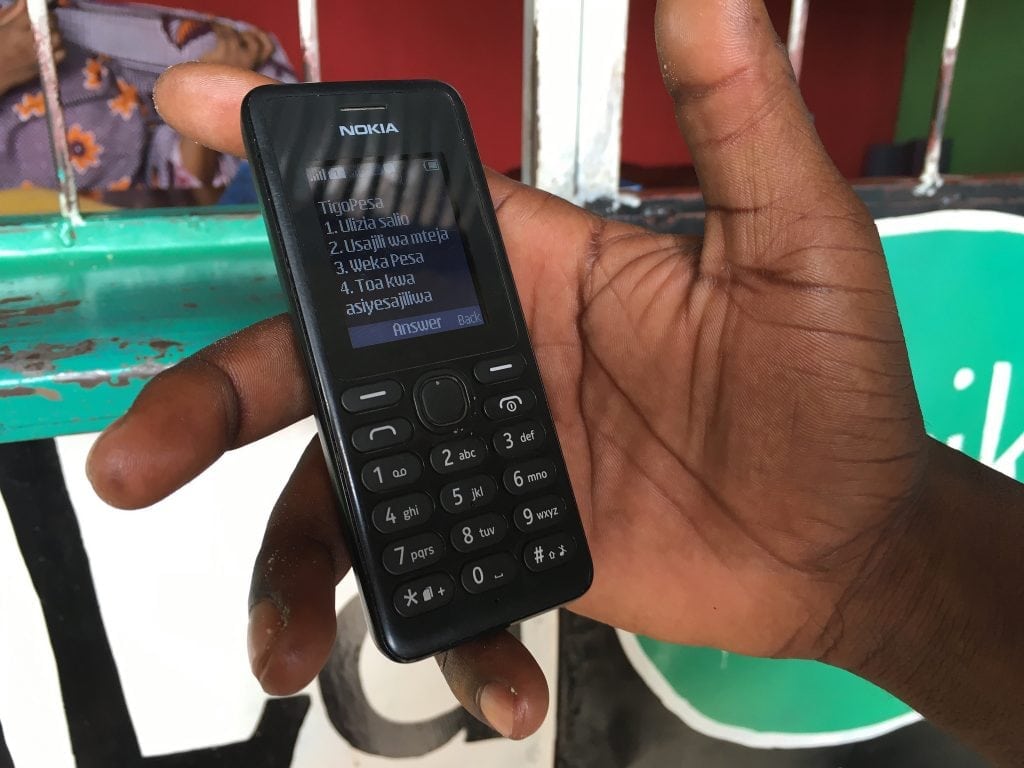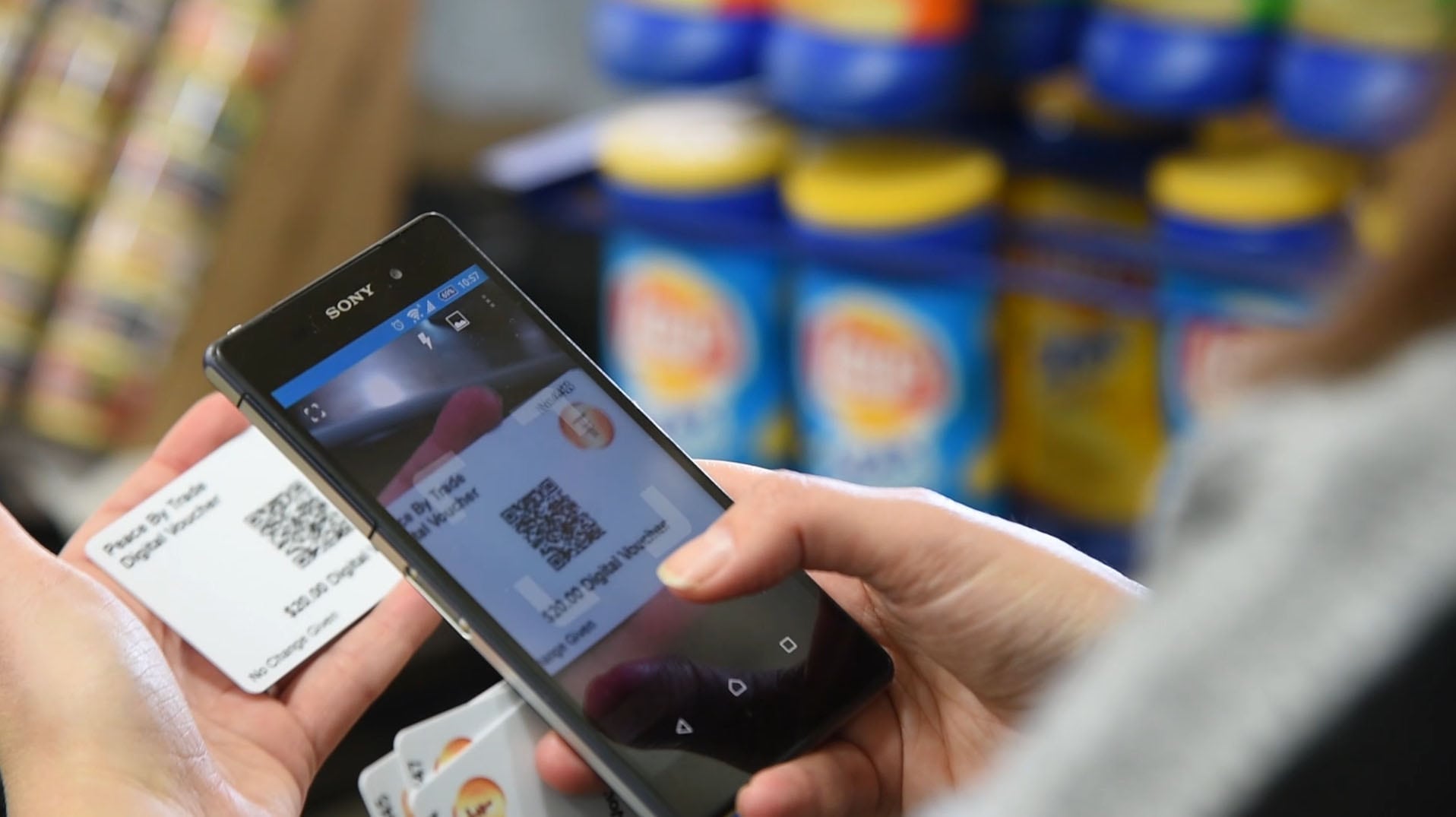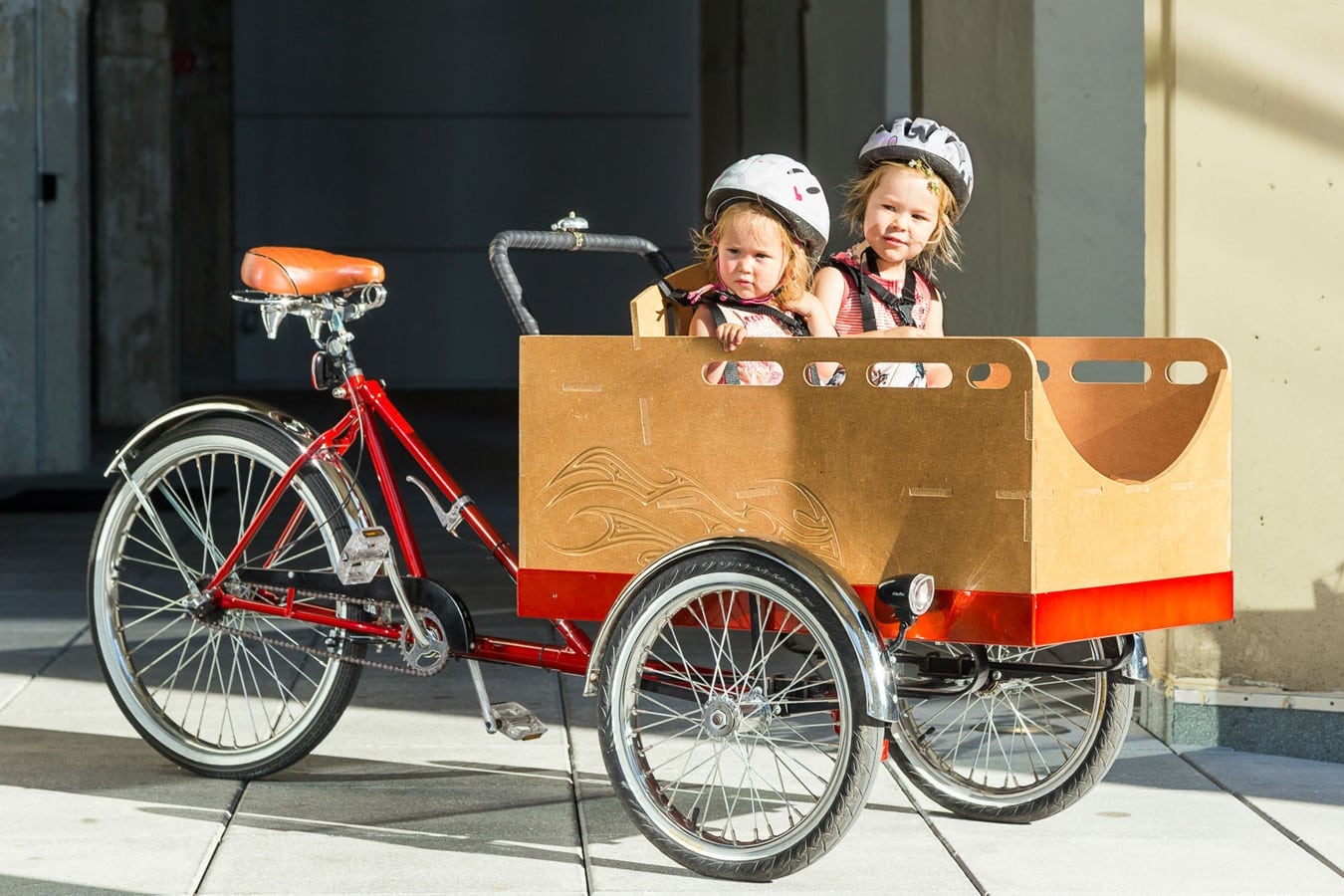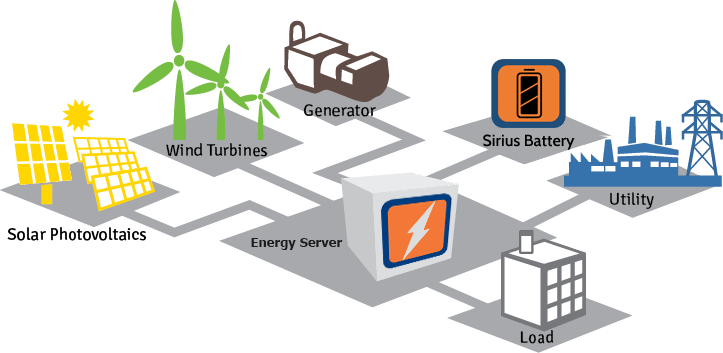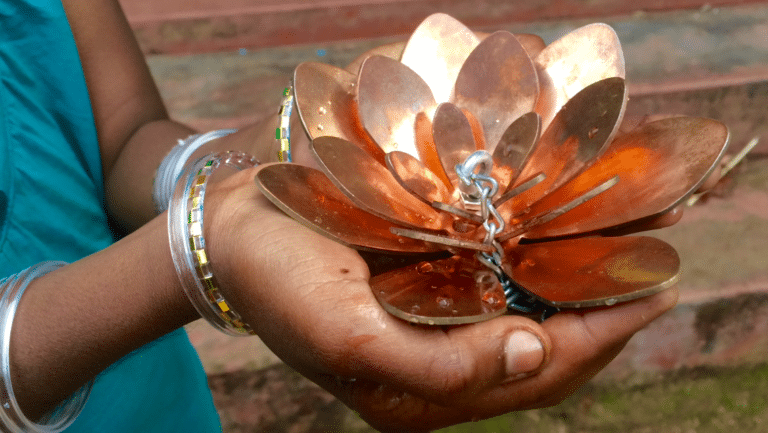Prototype, noun: A first or preliminary version of a device or vehicle from which other forms are developed – Oxford Living Dictionaries
The technologies that improve lives in the world’s underserved communities are born as prototypes that evolve through testing and tinkering in workshops, laboratories and garages. We polled our network of engineering experts in search of the next important products in global development. These are their recommendations. Each has the potential to become a marketable product that can improve the quality of life in the world’s most vulnerable places.
Mobilized Construction, an App for Rural Road Repair
For those of us who don’t know what it’s like to live at the end of a poorly maintained dirt road in rural Uganda, Kevin Lee has a simple way to put it in perspective: “Imagine going to visit your friend, and know when you’re going to show up,” Mr. Lee says. Mr. Lee is one of the co-founders of Mobilized Construction, a startup that deploys mobile phone applications to manage and monitor rural road repairs in developing countries, some of the hardest to reach places.
When running on a smart phone mounted to a vehicle, the app identifies roads in need of repair. Once the locations are known, local governments can use the app to organize “micro enterprises” of repair crews. These crews are men and women equipped with shovels and wheelbarrows, not the bulldozers and excavators usually employed in road repair. The upshot to this lean system is quicker road repair for less money, says Johan Jensen , a co-founder of the startup. By organizing repair crews with hand tools rather than heavy machinery, the cost of repair drops from $10,000 per kilometer to $1000 per kilometer, according to the startup team’s estimates.
How does the app work? It engages a phone’s accelerometer, GPS and video camera to identify bumps in a road. Mr. Jensen calls it an “accelerometer driven IRI measurement system,” referring to the International Roughness Index of roads.
For more on Mobilized Construction:
Online: mobilizedconstruction.com
E4C’s News: Fixing the world’s rural roads with a shovel and a phone app
E4C’s Solutions Library: Mobilized Construction
Hitch, Wireless Routers for an Offline Internet
Hitch combines unique wireless routers with a software service to provide Web content offline. The routers can store and process data and they include their own solar power supply and batteries. Their software runs proprietary algorithms on each router to connect to other Hitch routers and form local decentralized cloud platforms. The system stores, shares, and updates Internet content, services and applications. In other words, these devices automatically create Wi-Fi hotspots and provide content even when the Internet is not available.
The result is a broadband network with useful content that operates in underserved communities. When there is more than one router, they can connect into data hubs that allow users to go online without the need for individual ISP connections. These create a useful Internet experience and an offline “Internet” for people who tend to have connectivity problems and lack access.
For more on Hitch:
Online: tryhitch.com
E4C’s Solutions Library: Hitch
6th Grain’s Digital Tools for Maize and Wheat Farmers
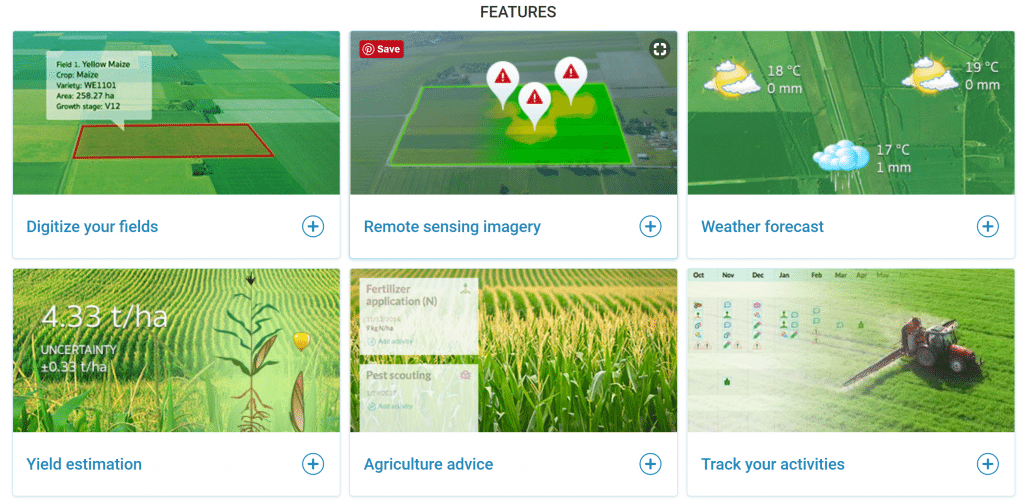
Source: Screen shot from 6grain.com
6th Grain is a big data application for agriculture. It aggregates data from satellites, ground stations, remote sensors and its network of farmers to improve grain yields. The service focuses on maize and wheat in Africa and Asia. Its FieldFocus service package digitizes a farm by combining satellite analysis with information that the farmers provide themselves to customize warnings and recommendations.
For more on 6th Grain:
Online: 6grain.com
E4C’s Solutions Library: 6th Grain
Otter, a Better Newborn Warmer by Design That Matters
Every year, roughly 4 million babies die in their first four weeks of life, mainly from complications of preterm birth, infection and asphyxia, researchers say.
But a team with Design that Matters believe they can prevent more than a quarter of those deaths by creating a better newborn warmer. Their Otter newborn warmer is designed to cost much less and consume less energy than the currently available warmers. It is also easy to operate, clean and sterilize and difficult to get wrong, its designers say.
Otter is a warming bassinet for newborns in developing countries that are born prematurely or too low in weight (or both). The prototype, completed in the summer of 2017, is durable, easy to wash and features an easy-to-read and easy-to-use numerical interface.
For more on Otter:
Online: designthatmatters.org/otter
E4C’s News: A Better Warmer May Be Enough to Save 1 Million Babies’ Lives Each Year
Third Pole’s Therapeutic Nitric Oxide Delivery System
To understand the importance of Third Pole Therapeutics’ new device, it is helpful to know more about nitric oxide. This chemical compound has been used for nearly 20 years as a life-saving intervention for infants with pulmonary hypertension, mostly in hospitals in developed countries. When inhaled, NO relaxes blood vessels in the lungs without decreasing blood pressure. It is stored in tanks that are filled off-site and transported to medical centers for use. But that method may soon be outdated.
Dr. Warren Zapol, co-founder of Third Pole, had the idea to generate NO for inhalation using controlled electrical discharge.
“This groundbreaking approach resulted in a simple, convenient, economical, and lightweight prototype capable of generating nitric oxide (NO) from air, on-demand and on-site, which potentially eliminates the need for large compressed gas cylinders,” David Zapol, Dr. Warren Zapol’s son and co-founder of Third Pole, told E4C.
For more on Third Pole’s device:
Online: pole3.com
E4C’s News: Third Pole’s Easier Way to Deliver Nitric Oxide to Patients with Pulmonary Hypertension
Blockchain and RFID for Transactions in Rural Communities
Blockchain, the digital ledger that tracks transactions in cryptocurrencies such as Bitcoin, could also serve farmers and other members of rural communities in developing countries. Satish Babu, Chair of the Internet Society India Trivandrum chapter (ISOC-TRV) and a contributing editor at E4C, is developing a network of devices as an “Internet of Things” that records information in blockchains. He explains:
“Animal husbandry is an important contributor to the GDP of rural India. As of now, most farmers do not have any authentic data on animals of any kind, and the availability of data (such as daily milk production, calving, health and geneaology of multiple generations) would be immensely helpful for farming communities, banks (who loan funds to farmers for purchase of milch animals), research institutions, government departments and farmers’ organizations. The prototype uses an RFID and sensors (worn around the animal’s neck), coupled with “smart” milking machines and a mobile app to capture multiple data points on each animal and then to store the information for access by authenticated stakeholders on a blockchain-based storage. The whole system is designed to be owned and run by famers’ co-operatives.”
DreamSave, an App for Rural Savings and Loan Associations
DreamSave is a mobile application that helps savings and loan associations in rural villages go digital. Through the app, the associations can issue and track mobile money loans, save repayment records and update members on their loan status. Also, the digital record keeping could someday be used as a form of credit history that would give association members access to formal financial services.
The app’s developer, DreamStart Labs, works with Project Concern International, a non-profit organization working to alleviate poverty, piloting the service with village savings and loan associations in Tanzania. DreamSave is still in the prototype stage, but its developers hope that most of Tanzania’s informal community capital will eventually flow through their app within the next three years.
To help DreamSave get there, the Vodafone Americas Foundation recently awarded DreamStart Labs with a (USD) $100,000 grant as a winner of its Wireless Innovation Project. The project is an annual competition that provides seed funding for early stage startups using technology to tackle social issues.
For more on DreamSave:
Online: dreamstartlabs.com
E4C’s News: Banking in Rural Tanzanian Villages: Now There’s an App for That
Voz Box, a Customized Voice for Those Who Cannot Speak
The startup Project Vive’s voice-generating prototype Voz Box mixes customizable sensors, open-source software and off-the-shelf parts to create a better, lower-cost system for people who have trouble speaking.
“Four million, six hundred thousand people have cerebral palsy (CP) or ALS and cannot speak,” Mary Elizabeth McCulloch, Project Vive’s founder, told E4C. “The Voz Box is an affordable and accessible speech-generating device. Many speech-generating devices are too expensive and don’t offer many options of sensors to accommodate to people’s abilities. The Voz Box is multilingual and uses open source software to allow for contributions in different languages.”
The technology attempts to improve on commercial speech-generating devices that suffer deficiencies such as poor battery life, weak speakers, lack of technical support and training and high costs. Some of Voz Box’s impressive stats and features include a battery life of 20 hours, a cost of around (USD) $1000 (compared to a range of $7000 to $16,000 for commercial devices), intuitive interface and training and support through online chat and YouTube videos.
The device was a 2017 finalist at the Innovation Showcase hardware entrepreneurship contest held by the American Society of Mechanical Engineers.
“Development [of Voz Box] has happened on a shoe-string budget to start off (and part time in the evening, etc), and has the user squarely at the center,” says Dr. Anand Narayan, an Intellectual Property and Development consultant and an adviser to iShow finalists. Ms. McCulloch is driven by exceptional personal passion, Dr. Narayan says.
For more on Voz Box:
Online: Projectvive.com
AID:Tech’s Digital Identity Through Blockchain
One startup has pioneered digital identification of people through blockchain, the method of digital record keeping that authenticates Bitcoin and other digital cryptocurrency. AID:Tech employs blockchain technology to bestow a traceable identity on people who do not have identification records, either because they never received any or because they have become lost in war, natural disaster or other events.
“To effectively deliver resources, whether it is cash, payments or material supplies, verifiable identity is critical. Yet, there are over 2 billion people in the world without legal identity and over 1.4 billion people without basic banking services,” Grace Ma, AID:Tech’s Program Manager, told E4C.
“AID:Tech harnesses Blockchain technology to enable the provisioning of digital identity as basis for service delivery. Our solutions offer levels of transparency and traceability over processes previously unheard of. Not only does this introduce potentially huge advantages to our client partners, which include international NGOs, development banks and governments – in the form of data-led evaluation and analysis, end-users are also equipped with a digital tool that serves as both identity tool and wallet. Instead of a one-off payment product, this tool offers long-term benefits by helping users build social and economic footprints,” Ms. Ma says.
In 2015, AID:Tech deployed its pilot working with the Irish Red Cross in Lebanon with Syrian refugees. They granted more than 500 digital to more than 100 refugee households (case study). Now the startup is working with UNDP Serbia and the government of Nis to deploy a platform that allows for remittances of money from abroad.
For more on AID:Tech:
Online: aid.technology
Maggie Waggie Pedal-Powered Child and Cargo Carrier
Jason Neal and Edrie Ortega converted a salvaged 1979 Worksmen tricycle into a pedal-powered child transport and cargo carrier they call the Maggie Waggie. The two are colleagues at Mr. Neal’s Baltimore, Maryland-based architecture and industrial firm, J. Neal Design. Maggie Waggie, named for Mr. Neal’s oldest daughter, solves problems in parking, exercise and fun deficits for kids on Baltimore’s streets.
The prototype builds on the Worksmen frame and adds a box equipped with padded bench and kids’ seatbelts. The box fits together with joints that can be pressed into place by hand, cutting the need for fasteners. It is constructed of Forest Stewardship Council-certifed medium-density fibreboard (FSC-certified MDF) treated with Extira for eco-friendly moisture and insect resistance.
“The bike has always been a combination of utilitarian-ness that is scalable, and meets needs. We also want it to look awesome. Most aspects of a bike are functional. But we approach design for these the same way we approach our architecture. We know the importance of [functionality and design]. We want people to acknowledge that design makes your life better,” Mr. Neal says.
For more on Maggie Waggie:
Online: jnealdesign.com
E4C’s News: A Parking and Exercise Solution in One Three-Wheeled Kid Carrier
Sirius Supercapacitor Battery and Centauri Energy Server by Kilowatt Labs
To hear Omer Ghani talk about his prototypes, he and Kilowatt Labs may be on the verge of changing how we store energy for homes, industry and electric vehicles. And possibly how we generate energy, especially in the world’s emerging economies where diesel generators back up spotty power from central grids. As Mr. Ghani explains in his E4C Webinars presentation in the video below, he has developed a supercapacitor that combines the advantages of that technology with the best attributes of chemical batteries. As you would expect from a supercapacitor, the Sirius supercapacitor battery charges much more quickly than a chemical battery, charging in less than 30 seconds. It also has an extremely high cycle life, capable of charging and completely discharging 1 million times without losing much capacity. That complete discharge, a depth of discharge of 100 percent, and high cycle life mean that fewer batteries are needed, which can reduce costs. Also as you would expect from a capacitor, Sirius performs better than chemical batteries in extreme temperatures. And it can discharge quickly to supply power bursts when needed, such as in electric vehicles.
Where traditional capacitors come up short compared to chemical batteries, however, is in energy density for storage. Chemical batteries can store more energy per weight. The Sirius supercapacitor, however, has overcome that shortcoming with Mr. Ghani says.
“Supercaps [traditionally] have low energy density,” Mr. Ghani says. “Ours is 80 watt hours per kilogram, achieved by working with partners who provided enriched graphene.”
For comparison, lead acid batteries (such as car batteries) have a specific energy density of 33–42 Wh/kg and lithium-ion batteries are at 100–265 Wh/kg, while traditional supercapacitors come in at 6-10Wh/kg.
Sirius batteries can combine with Kilowatt Labs’ Centauri Energy Server and intermittent power generators based on solar panels, wind or water to provide reliable energy to a microgrid around the clock. The server balances batteries of any kind, not only Sirius supercapacitors, but also chemical batteries. It improves the capacity of batteries by up to 40 percent and eliminates the problems that some chemical batteries have with deep discharge. The system can improve the life span of the hardware it integrates with and reduce costs.
“Now you can go and electrify africa without putting up one more pole,” Mr. Ghani says.
For more on Sirius supercapacitor batteries and the Centauri Energy Server:
Online: kilowattlabs.com
E4C Webinars: Innovation in Microgrids (please see the video below)
